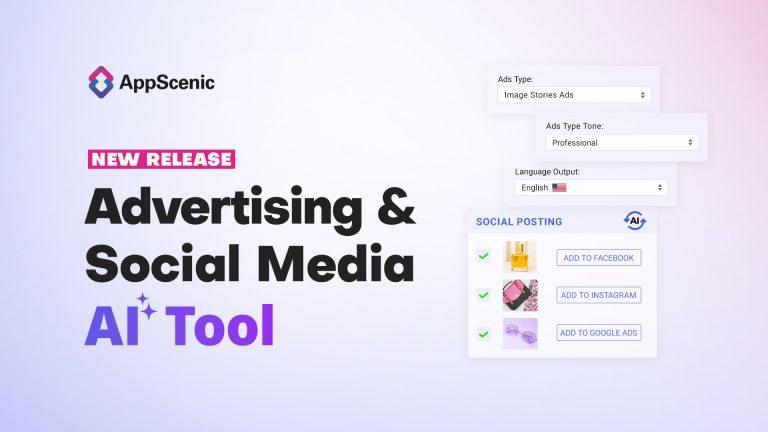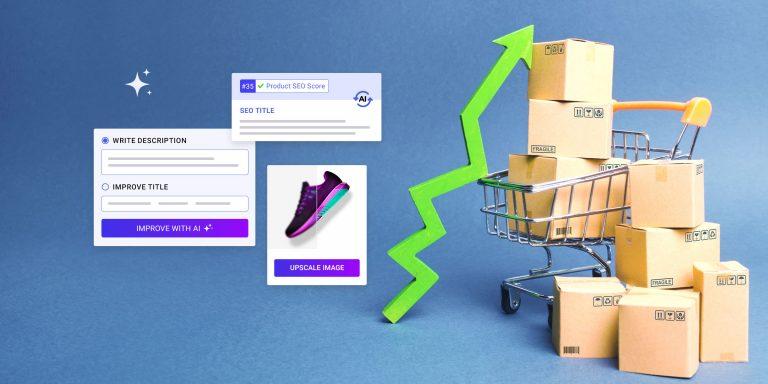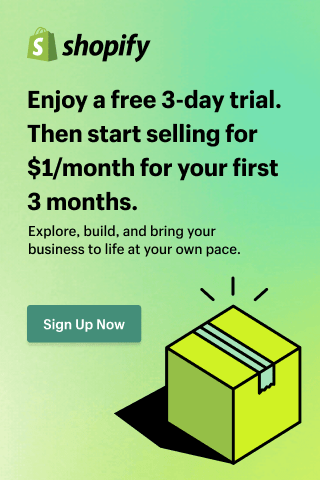Starting a dropshipping business can be one of the most cost-effective and low-risk ways to break into the complex world of ecommerce. With minimal upfront investment, no need to manage inventory, and the ability to run your business from anywhere, dropshipping offers a unique opportunity. But as simple as the dropshipping model may seem, there are a few key steps that can set you up for long-term success.
In this article, we’ll walk you through the six simple steps to get your dropshipping business up and running. By following these steps, you’ll learn the key essentials, from choosing your niche to launching your store. So let’s get started!
Table of Contents
Step 1: Choose your niche
The first and most critical step in launching a dropshipping business is choosing the right niche. Your niche is the specific category or industry in which you’ll operate. Think of it as the focus of your online store. Yes, the options are vast, but choosing a niche that balances passion and profitability is key.
Why is your niche important?
- Competition: Popular niches tend to be crowded, making it harder to stand out. Narrowing your niche helps reduce competition.
- Audience targeting: A specific niche allows you to attract a focused audience, which leads to higher conversion rates.
- Profitability: Some niches are inherently more profitable than others. It’s crucial to find a niche with high-demand products and good margins.
How to choose the right niche
- Follow your passion: Choose a niche you’re interested in or have some knowledge about. This will make running your business more enjoyable and help you connect better with your audience.
- Look for profitability: Use tools like Google Trends or SEMrush to see how many people are searching for related products and understand the demand for different niches. Look for growing interest, low competition, and opportunities for higher profit margins.
- Check competition: While some competition is healthy, a saturated market can make it difficult to stand out. Find a balance by choosing a niche with moderate competition and room for your unique offerings.
Examples of profitable niches include eco-friendly products, fitness gear, and pet supplies. To help get you started, we wrote a series of articles about top niches to dropship, where we explored the best product categories to sell and why.
Read more: The Importance of Being Niche Specific in Dropshipping
Step 2: Research your competition
Once you’ve picked up a niche, your next step is to research your competition. Knowing what your competitors are doing will help you understand the market dynamics, identify gaps in their offerings, and avoid common mistakes.
The questions to ask when doing competitor research
- What products are your competition offering, and at what price points?
- Are they using paid ads, social media, or influencer marketing? What content seems to resonate with their audience?
- What do their customers like and dislike about existing products in the market?
- What’s their site’s usability? What about the checkout process and overall user experience?
Key market research tactics
- Analyze competitors: Visit competitors’ websites and analyze their pricing strategies, product offerings, and customer reviews. Tools like Ahrefs or SEMrush can help you track their keywords and backlinks.
- Survey potential customers: If possible, gather feedback from potential customers. Ask them what they’re looking for in products, what problems they face, and what would convince them to purchase from you.
- Keyword research: Use tools like Google Keyword Planner to find out which search terms your target audience is using. This will give you insights into the types of products people are searching for and the language they use.
Understanding your competition can help you refine your product offerings and find ways to position yourself uniquely within the market.

Step 3: Find reliable suppliers
A reliable supplier is the backbone of any successful dropshipping business. Since you won’t hold inventory, you’ll depend on your supplier to deliver products to your customers on time and in good condition. Selecting the right supplier can make or break your business.
How to find suppliers
- Use dropshipping platforms and online marketplaces: Platforms like AppScenic can connect you with vetted suppliers who can handle product fulfillment for you. Our platform simplifies finding domestic suppliers in the USA, EU, or UK that offer high-quality products and fast shipping.
- Contact suppliers directly: Don’t hesitate to reach out to suppliers directly, ask questions about their products, shipping times, and policies.
What to look for in a supplier
- Product quality: Always order product samples to check for quality before listing their products on your store.
- Shipping times: Faster shipping is crucial for customer satisfaction, so look for suppliers with warehouses in your target regions.
- Reliability: Research supplier reviews and ratings. Consistency in fulfilling orders is key to keeping your business running smoothly.
- Return policies: Ensure your supplier has a clear return policy, so you’re not left handling unhappy customers on your own.
Read more: How to Identify a Reliable Supplier for Your Dropshipping Niche
Step 4: Build your online store
Now that you’ve got your niche, competition insights, and reliable suppliers, it’s time to build your online store. Luckily, platforms like Shopify and WooCommerce make creating an ecommerce site incredibly easy, even if you have no prior experience.
Steps to build your store
- Choose an ecommerce platform: Shopify, WooCommerce or Wix are popular options. At the moment, Shopify is the most popular ecommerce platform as it’s especially user-friendly and ideal for beginners.
- Choose a domain name: Your domain should reflect your brand and niche. Try to keep it short, memorable, and easy to spell.
- Design your store: Most platforms offer templates you can customize. Make sure your site is easy to navigate, mobile-friendly, and visually appealing.
- Set up payment gateways: To make sales, you’ll need to set up secure payment gateways. Offering multiple payment methods ensures you don’t lose potential customers at checkout.
- Choose shipping rates: You need to configure shipping rates and delivery options in your store. Use tiered shipping based on order value or weight, and offer tracking whenever possible to improve customer trust.
- Add products: Add the products you plan to sell, including product titles, descriptions, prices, and high-quality images.
- Add essential pages: Include pages like a home page, main product category pages, an About Us section, and a contact page. You’ll also need to add legal pages such as a privacy policy, shipping information, and return policy.
- Optimize for SEO: Use relevant keywords in your product titles, meta descriptions, and product pages to ensure your store ranks well in search engines.
Read more: How To Start Dropshipping With AppScenic – A Guide For Beginners
Pro tip: Use AppScenic’s SEO AI tool
If you want to streamline your SEO efforts, platforms like AppScenic offer AI Tools that generate optimized product titles, descriptions, and keywords for you, helping you rank higher and drive traffic without the manual work.
Watch the video below to see how easy it is to use!
Step 5: Register your business
One of the most important steps to ensure your dropshipping business operates legally and is protected from liability is to officially register it. While dropshipping may seem like an easy business to jump into, it’s crucial to treat it like any other legitimate business. Registering your business separates your personal assets from your company’s liabilities, giving you peace of mind and a more professional standing.
Why registering your business is important
By officially registering your business, you gain credibility, avoid potential legal trouble, and make it easier to handle finances. Plus, as you grow, you may find that suppliers and customers are more likely to trust a registered business.
How to register your dropshipping business
Choose a business name
The name you choose for your dropshipping business will often align with your domain name and branding. Spend time brainstorming a name that reflects your niche, is memorable, and has available domain options. Having a strong brand name helps establish trust with customers and creates a cohesive brand experience.
Form a legal business entity
In the US, the most common business entities for dropshipping are:
- LLC (Limited Liability Company): This is a popular choice because it protects your personal assets from any liabilities that the business incurs. If your company faces a lawsuit or goes into debt, your personal assets like your home or car are protected.
- Corporation: Although a bit more complex to set up than an LLC, a corporation may be a good fit for larger businesses with multiple stakeholders or if you have big plans for expansion.
You can file for an LLC or corporation by visiting your state’s secretary of state website. The filing process is relatively straightforward, and in many states, you can complete it online in a few minutes. Be sure to review the fees involved, which can vary by state.

Obtain a Tax Identification Number (TIN)
After filing for your LLC or corporation, you’ll need a tax identification number (TIN), which acts as your business’s unique identifier for tax purposes. This number is issued by the IRS, and it’s essential for opening a business bank account and setting up a payment gateway for your dropshipping transactions.
To obtain your TIN, visit the IRS website and submit an application for an Employer Identification Number (EIN). Once approved, you’ll receive your EIN, which will be your business’s TIN.
Open a business bank account
Once you have your TIN, open a separate business bank account that is linked to your dropshipping store. This account will be used for all business transactions, including deposits from sales and expenses like web hosting, maintenance, and supplier payments.
Separating your personal and business finances is crucial for proper accounting and tax filing. It also makes it easier to track your business expenses, manage cash flow, and appear more professional to suppliers and customers.
Get a reseller’s permit or Sales Tax Identification Number
Depending on where you operate, you’ll also need to obtain a reseller’s permit or sales tax identification number (TIN) from your state tax office. Most states require that you collect sales tax from customers, which you’ll need to remit to the state.
If you plan to sell in multiple states, you may need to research the tax laws of each state and obtain sales tax permits accordingly. Some states have agreements where taxes are collected only once, but others require individual filings. By obtaining the necessary sales tax permits, you can legally sell products and ensure compliance with state tax laws.
Now, all these only apply if you’re living in the US, but if you’re not a USA citizen, for example, you’re in Europe and want to start dropshipping in the USA, then check out our video below on how to incorporate your dropshipping business in the US.
Read more: Understanding the Legal Risks of US Dropshipping
Step 6: Launch your store and start marketing
You’re now ready for the final step, launching your store! But remember, launching your store is just the beginning. You have to market your products and drive traffic to your site.
Marketing strategies for dropshipping
- Social media marketing: Create business accounts on Instagram, Facebook, and TikTok to showcase your products. Social media platforms are perfect for visually appealing products, and you can use paid ads to increase visibility.
- Influencer marketing: Collaborate with influencers in your niche to reach their followers. This can be especially useful for lifestyle, beauty or fashion niches.
- Email marketing: Build an email list by offering discounts or free shipping for first-time subscribers. Use platforms like MailChimp or Klaviyo to send newsletters, promotional emails, and abandoned cart reminders.
- Search Engine Optimization (SEO): Implement on-page and off-page SEO strategies to increase your visibility on search engines. Use long-tail keywords in product descriptions, titles, and meta tags to rank for specific search queries.
- Google ads and paid advertising: Platforms like Facebook Ads and Google Ads can help you quickly reach a large audience. Start with small budgets to test different campaigns and scale up once you see what works. With AppScenic AI Tool for Google, Facebook, and Instagram Ads you can easily generate ads that are tailored for each platform.
- Use AI powered SEO tools: AppScenic’s AI features are an excellent resource for automating SEO optimization on product pages, helping your store rank higher in search results.
Final thoughts
If you’re ready to start your own dropshipping business, there’s no better time than now. Now, these six steps can be your roadmap to success, but just like any other business, dropshipping requires hard work, lots of planning, and always being ready to adapt and evolve.











